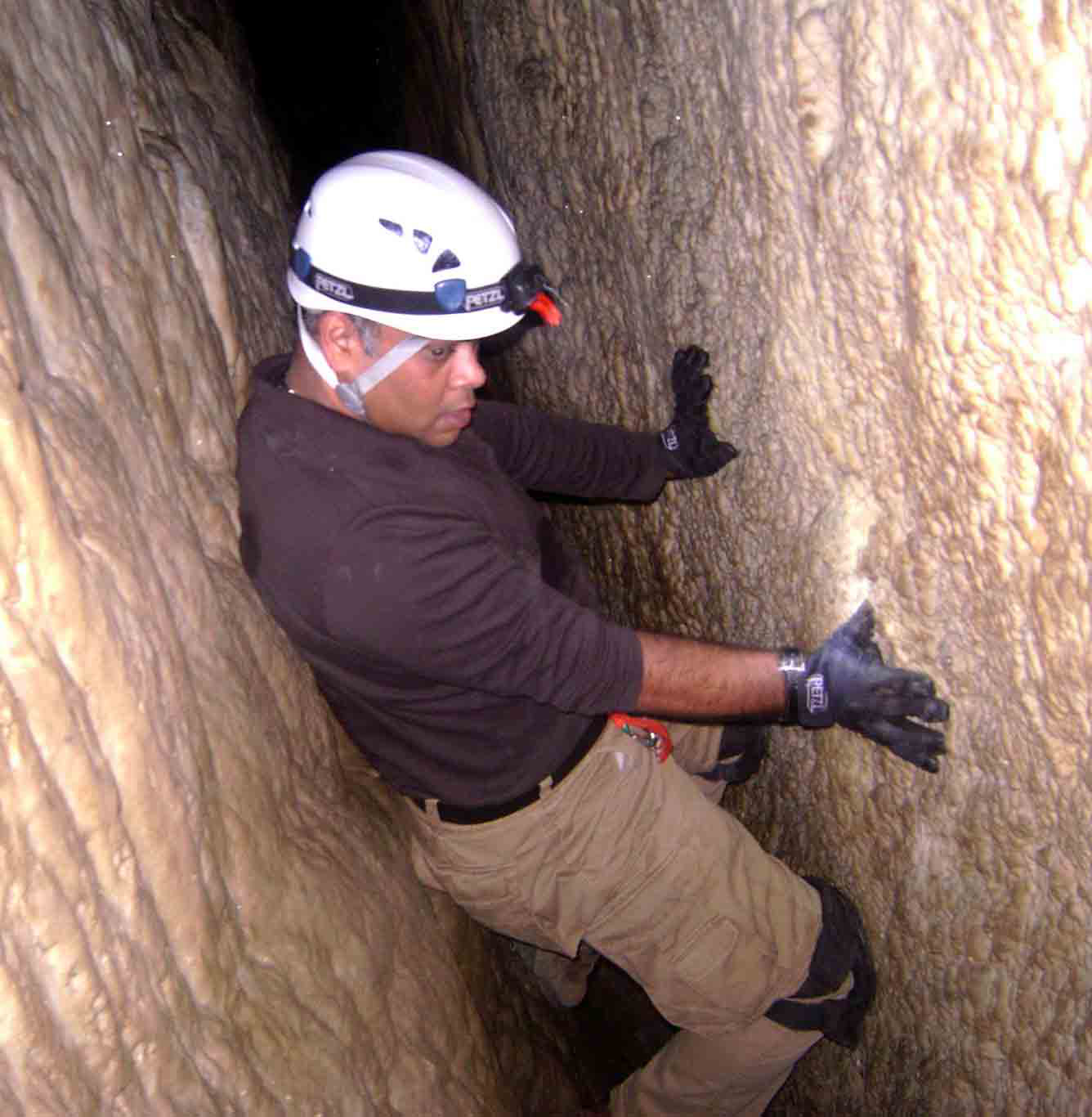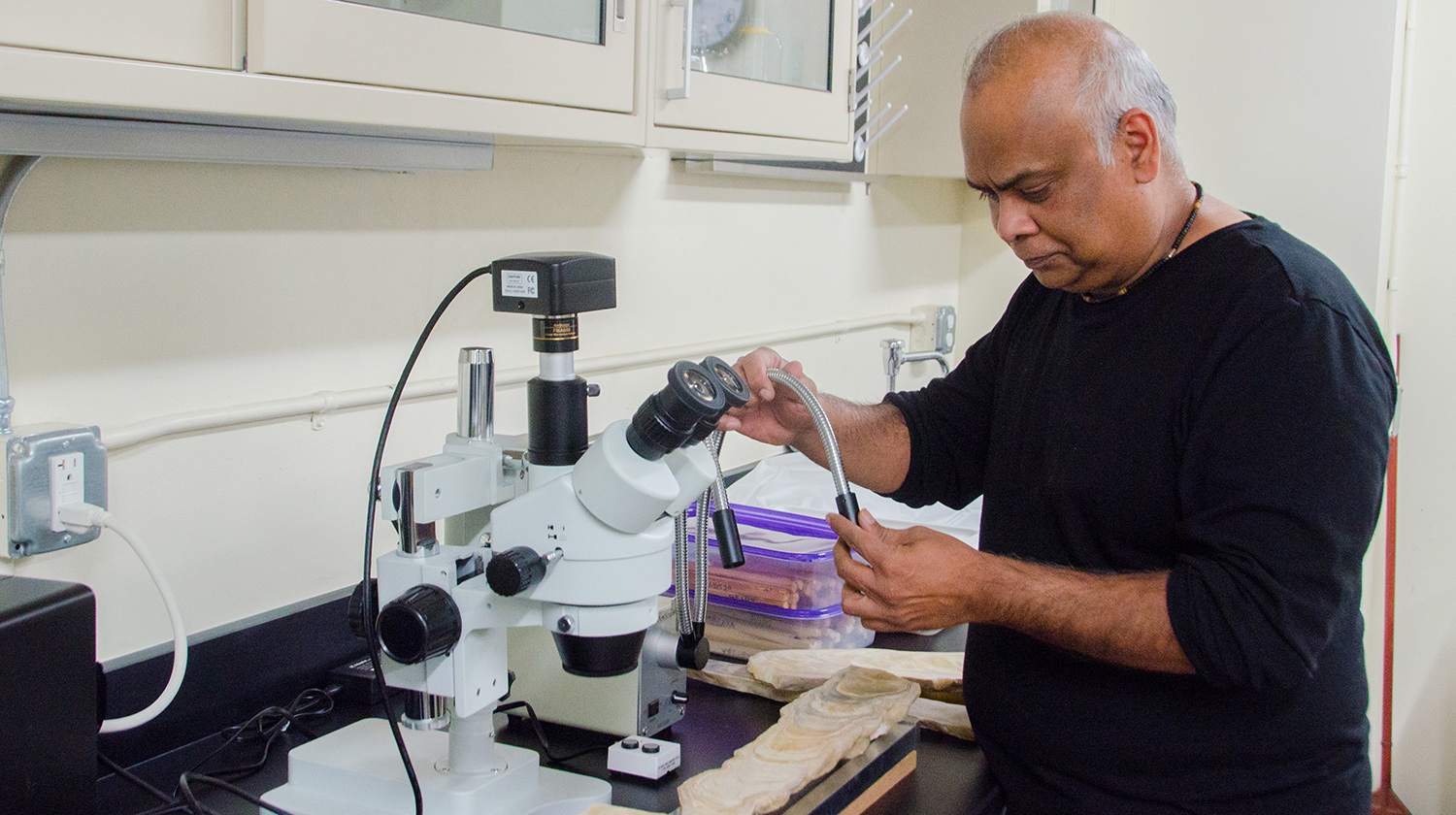
A groundbreaking recent discovery will enable scientists to accurately date objects from much earlier in Earth’s history than ever before. California State University, Dominguez Hills (CSUDH) Professor of Earth Sciences Ashish Sinha is among the team of international researchers who found what can be best described as the “Holy Grail” of radiocarbon dating: The team’s research was published in the December 2018 issue of Science magazine.
The new study revealed how a pair of rare stalagmites inside the Hulu Cave, located near Nanjing, China, have unusually low levels of dead carbon, allowing an accurate carbon-14 (C-14) calibration–all the way to the limit of radiocarbon dating, about 55,000 years, representing a significant improvement beyond the limits of tree rings, which only go back the last 13,000 years.

Sinha’s research, led by Hai Cheng of Xi’an Jiaotong University in Shanghai, China, over a three-year period, refined the calibration of C-14 using a highly reliable chemical element called Thorium-230. The team found an unbroken record from 54,000 years ago by analyzing hundreds of layers within the stalagmites to establish a precise chronological baseline.
“Dead carbon, that is 14C free carbon, was always an issue with previous attempts to calibrate the radiocarbon clock further back in time. All C-14 in limestone rock that has formed over millions of years is usually gone,” said Sinha, whose contribution to the project focused on the analysis of samples and developing the statistical interpretation of data in the report. “Dead carbon obscures radiocarbon dating and varies from sample to sample, but the dead carbon fraction in the stalagmites we worked with was surprisingly stable. We got very lucky. We found the Holy Grail in that cave.”
Radiocarbon dating has been based on C-14 since the 1950s, when archeologists began using it to determine the age of organic compounds. The carbon is continually created in nature and is calibrated based on its level in the atmosphere and how it varies from year to year.
“For me, this work is exciting because I am now able to refine my paleoclimate reconstruction and start thinking more dynamically,” Sinha explained. “In paleoclimate research, often it is not possible to know what happened first or what happened later because of the uncertainty in the dating process, but now that we have reduced the uncertainty of carbon dating we are much better able to address big questions in climate science.”
In July 2018, a facet of Sinah’s past research led to the acceptance of a new geological age, known as the “Meghalayan Age,” which scientists have classified as the last 4,200 years in the plant’s history. Sinha’s research and an image of one of his speleothem samples from the Mawmluh Cave in the northeastern state of Meghalaya in India is used internationally in press reports.

Sinha’s academic expertise and research concentrates on the reconstruction of climate change over time. However, the researchers’ radiocarbon dating breakthrough may now be used by scientists not only studying climate change, but also archaeology, plate tectonics, earthquake activity, ecology, biology, oceanography and other sciences.
Sinha’s findings on this and other projects have been included in high-profile scientific papers that have garnered press coverage around the world.
In 2016, Sinha and his fellow researchers published a paper in the journal Nature on stalagmites using radio metric dating in the Sanbao Cave in central China. Their work mapped over 640,000 years of history of the Asian Monsoon–the longest and most accurate record to date–and changed the understanding of how ice ages terminate.
“I am very proud of what we’ve done and to be involved with my colleagues. We are really on the frontier of this work and always pushing that boundary,” said Sinha.